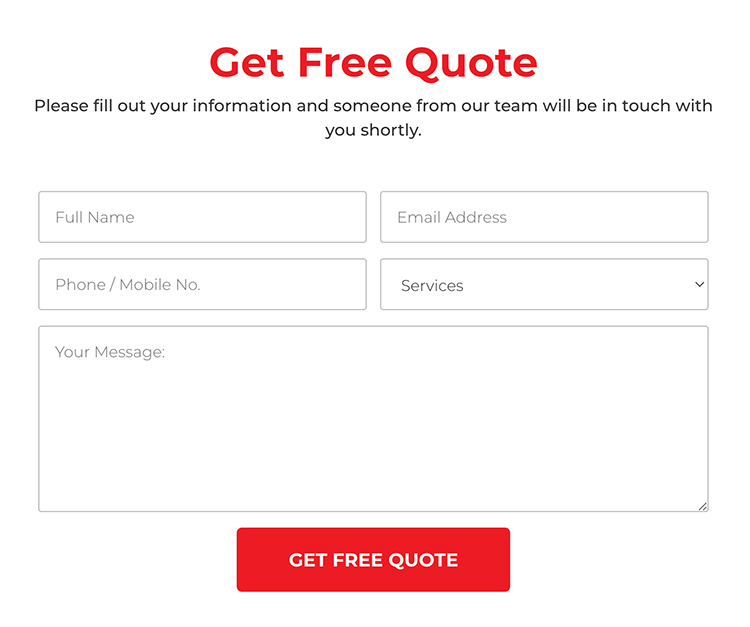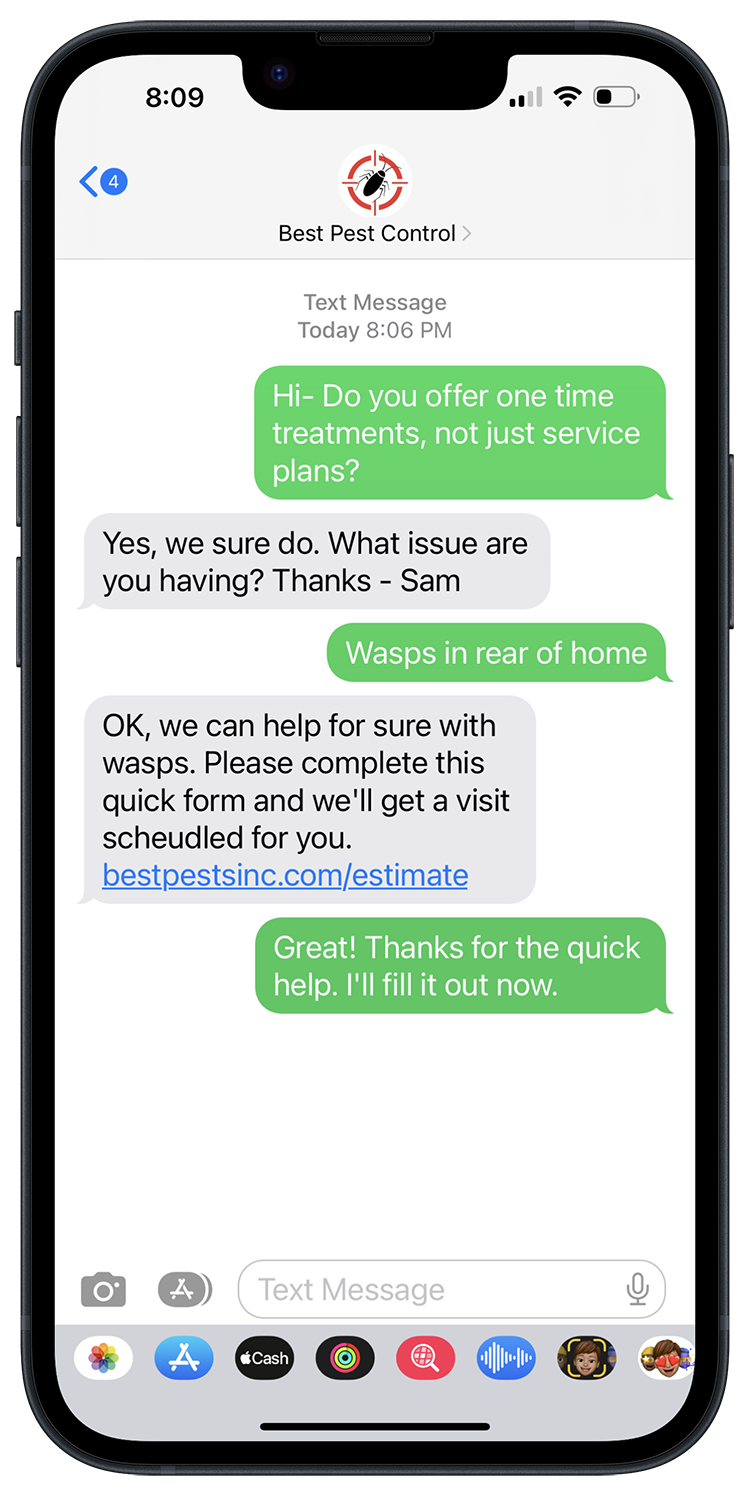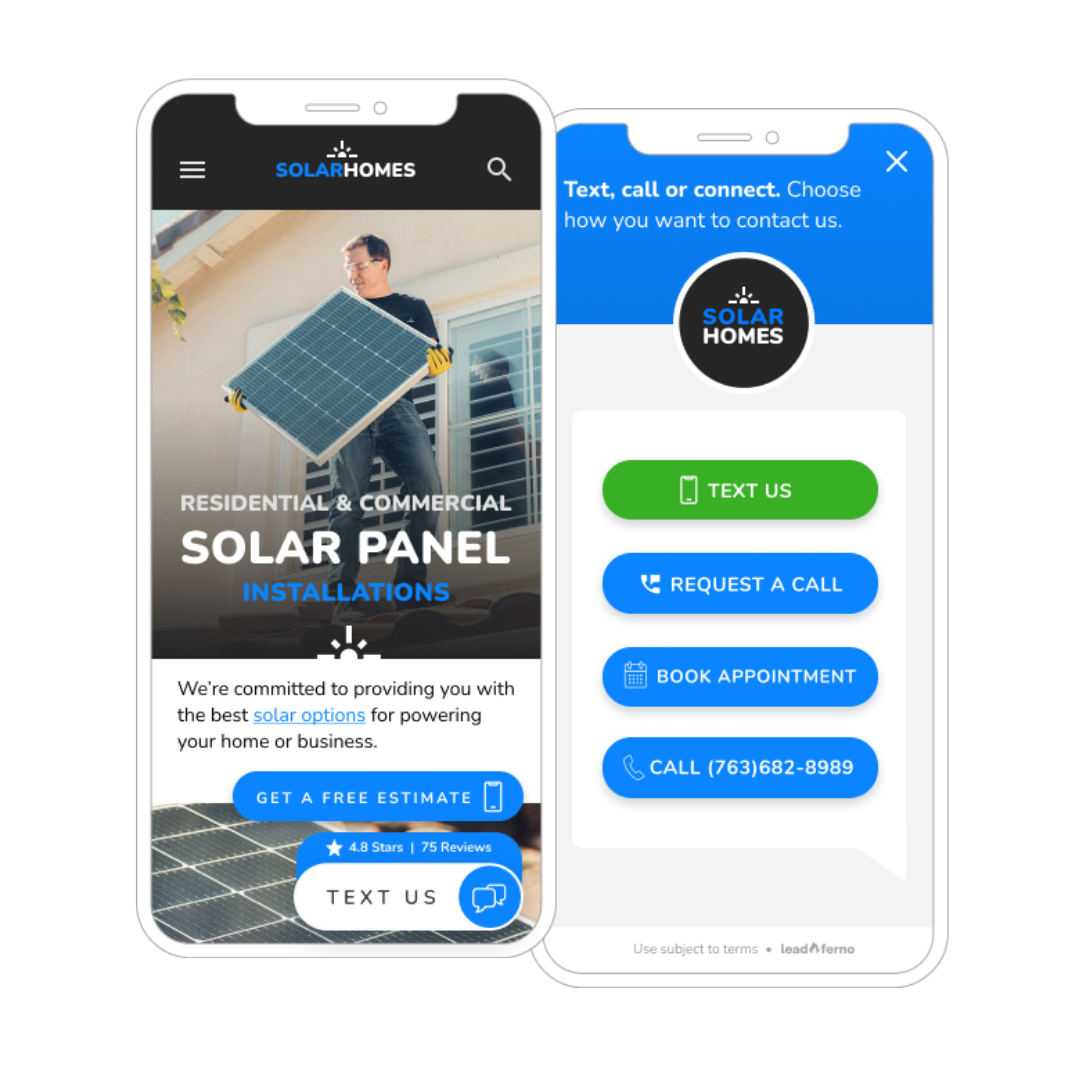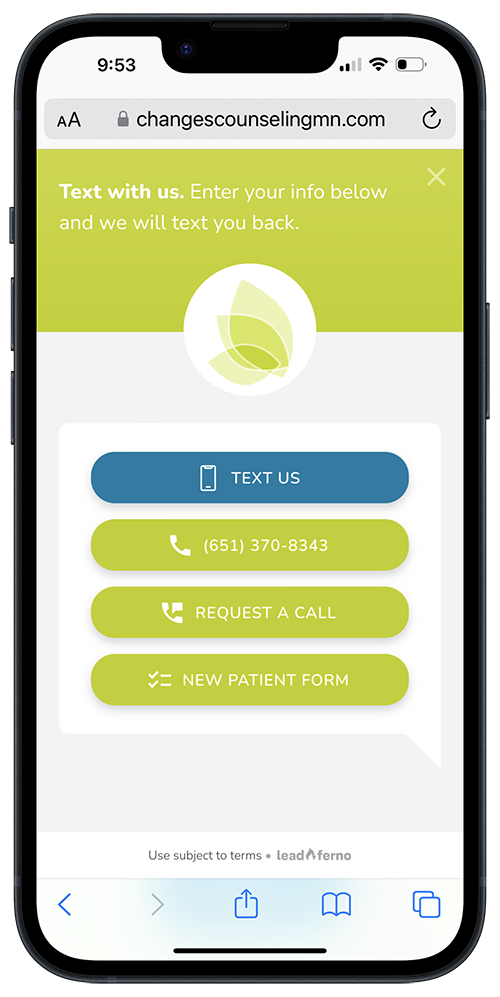Text Messaging Can Assist Your Lead Form Conversions
You can increase your website's lead form conversion by offering your visitors 2-way texting to ask questions. Use SMS to drive more form conversions.

For decades now, websites have offered a contact form, estimate form, or some type of lead form as their main conversion option for prospects.
No matter what level of the funnel your website visitor is in, the lead form presents an “all or nothing” option for a visitor to become a lead.
But today’s consumer has evolved past static forms and many likely have lost trust in contact forms and emails after having many submissions go unreturned.
Why are these basic forms still popular 20+ years later? They allow a business to control the pre-qualifying process of a lead. Being able to capture specific information and prospect data can produce a highly qualified lead well before a staff member has touched the lead.

Do you want to get more lead forms completed for more leads? Combine what today’s consumer seeks, text messaging, with your traditional lead form for even better results.
Get more lead form fills with SMS chat on your website
Offering the website visitor the ability to text with your business, the preferred channel to communicate, increases engagement and trust. Increasing trust even more is providing the prospect with quick replies. Text messaging is great for answers, smooth communication, and a connection boosts the consumer confidence to fill out your web form.

This allows your business to provide clarity and additional info a prospect might need before they are willing to fully complete a lead form. This could be answering questions on your process, timing, availability, qualifications, experience, pricing, and more.

SMS can remove the small hurdles to landing a new lead and quicly build trust to enable the next step. This increases your lead form fills and delivers more leads.
Calls to action work together
Calls to action (CTAs) are vital components of a website, designed to guide users towards desired actions. Whether that action is making a purchase, requesting an estimate, or asking a question.
When CTAs are strategically placed and crafted, they can complement and support one another in effective ways:
- Sequential Guidance: Multiple CTAs can guide users through a sequence of actions, like a funnel. For instance, you offer 2-way texting to answer their initial questions and then funnel them to your lead form.
- Reinforcement: Using primary and secondary CTAs together can reinforce the desired action. A primary CTA like “Schedule With Us” might be complemented by a secondary CTA such as “Questions? Just ask!”
- Addressing Different User Needs: Different visitors have different intentions. While one might be ready to purchase (“Buy Now”), another might only want to subscribe to updates (“Get our quarterly updates”). By offering multiple CTAs, you cater to a broader audience.
- Creating a Sense of Urgency: One CTA can introduce an offer (“Get 20% Off”), and another can emphasize its urgency (“Offer Ends Soon”).
- Building Trust: Before making a purchase, some users might want reassurance. Pairing a “Request an estimate” CTA with another like “Talk to an expert” can help build trust and confidence in the business and lead to a conversion.
- Offering Choices: The power of choice can enhance engagement. Offering communication staples like a form, email and phone call along with newer options like texting makes the prospect feel in control and comfortable, not forced.
Have CTAs support each other
To ensure CTAs effectively support each other follow these principles.
- Maintain Clarity: While having multiple CTAs can be beneficial, it’s essential not to overwhelm or confuse the user. The hierarchy and purpose of each CTA should be clear.
- Test and Optimize: Regularly test CTAs to see which combinations work best together in terms of positioning, wording, and design.
- Ensure Cohesiveness: The CTAs should feel cohesive in terms of design and messaging, ensuring a consistent user experience. A great way to achieve this centralizing your CTA options together, making the choices clear and cohesive.

In this example, Changes Counseling, a mental health therapy clinic offers click-to-call, call requests, texting and their new patient form as conversion options. Answering a prospects questions over text can clear the way for them completing the new patient form.

Combine SMS and lead forms for more leads
When CTAs are strategically combined, they can work synergistically to guide the user journey, enhance engagement, and boost conversions.
SMS can be the grease to get the wheel going. Allowing your prospects an easy channel to get initial concerns addressed paves the way for them to commit to your lead form. Combine web-to-text with your website forms for more leads.
Similar posts you may be interested in:
Categories:

Get our monthly update covering SMS, messaging, and Leadferno features.